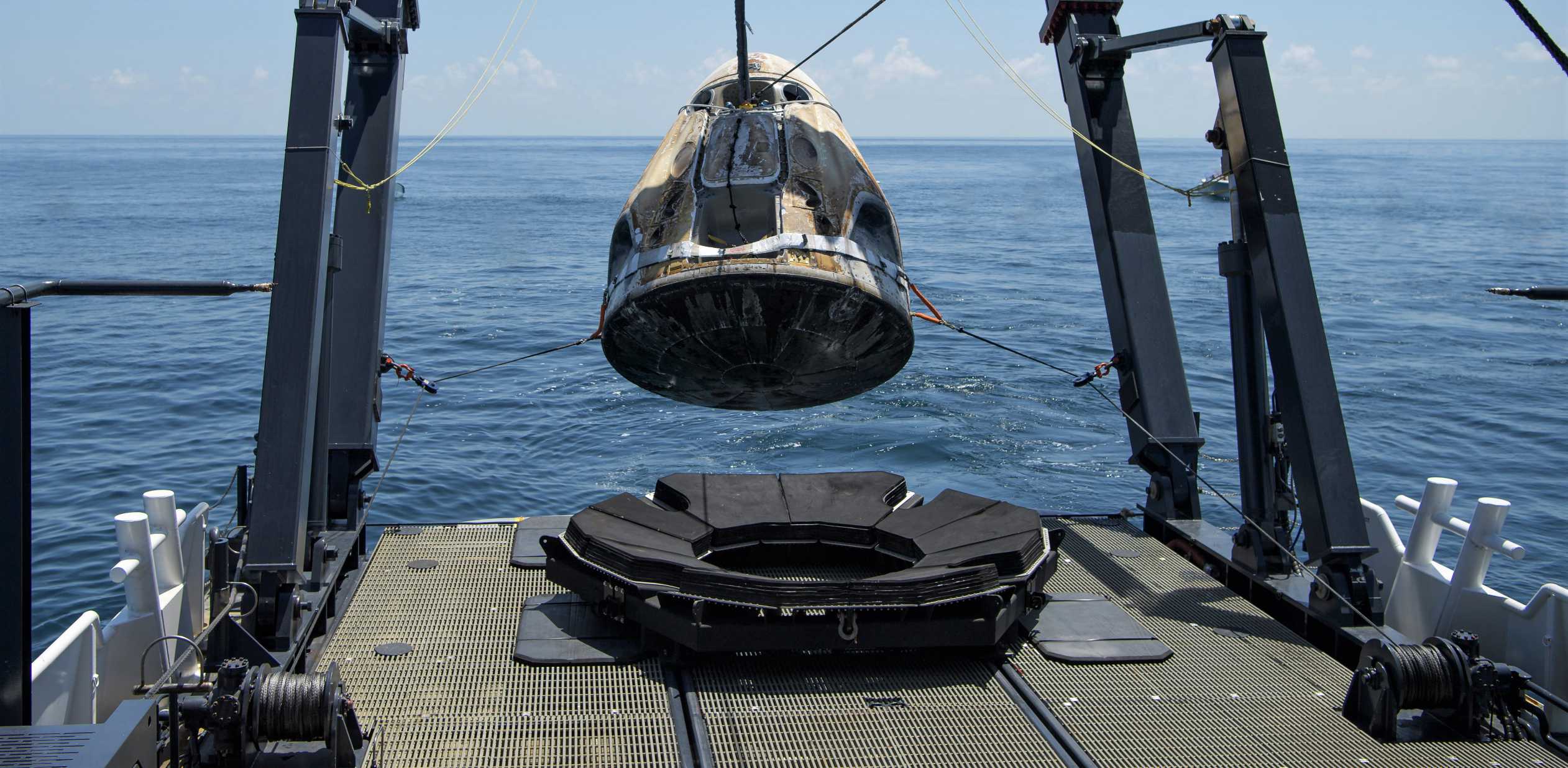

News
SpaceX’s historic Crew Dragon spacecraft returned to dry land for reuse
Five days after becoming the first private spacecraft to successfully launch and land astronauts, as well as the first crewed spacecraft to land in the Gulf of Mexico, SpaceX safely returned historic Demo-2 Crew Dragon to dry land.
After a brief night in a Floridan port on the Gulf of Mexico, SpaceX recovery vessel GO Navigator pushed off, ultimately completing a several-day journey around the entirety of Florida before arriving at Port Canaveral on August 7th. One final lift onto dry land marked the true end of Crew Dragon capsule C206’s Demo-2 NASA astronaut launch debut, although astronauts Bob Behnken and Doug Hurley were technically extracted from the spacecraft and airlifted to NASA’s Houston facilities on August 2nd.
While, prior to Demo-2’s May 30th launch, it appeared that post-astronaut extraction recovery operations would not be of significant interest to NASA, things changed dramatically just a few days later. On June 3rd, a modification to SpaceX’s Commercial Crew contract with NASA revealed that the space agency had unexpectedly given the company permission to reuse Falcon 9 boosters – and Crew Dragon capsules, too – on astronaut launches planned as few as eight months in the future.
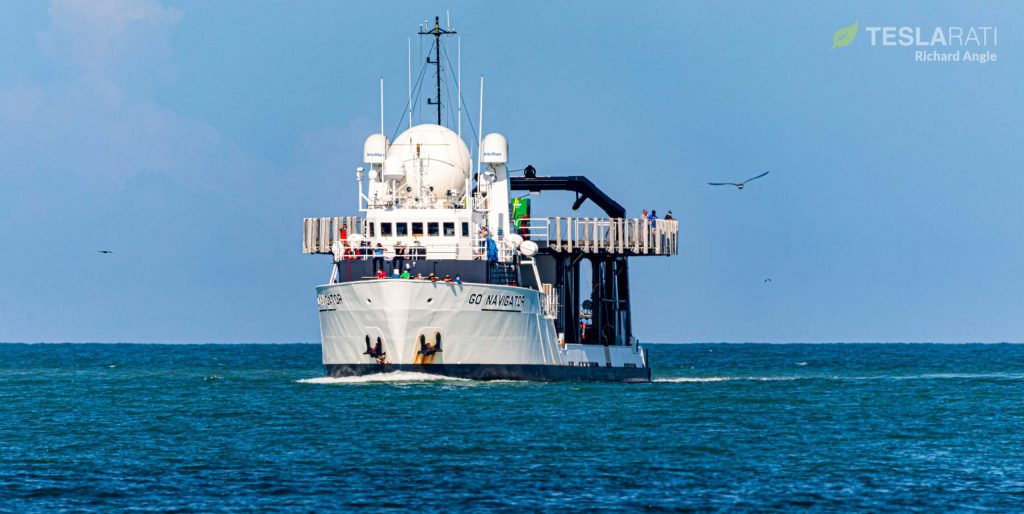
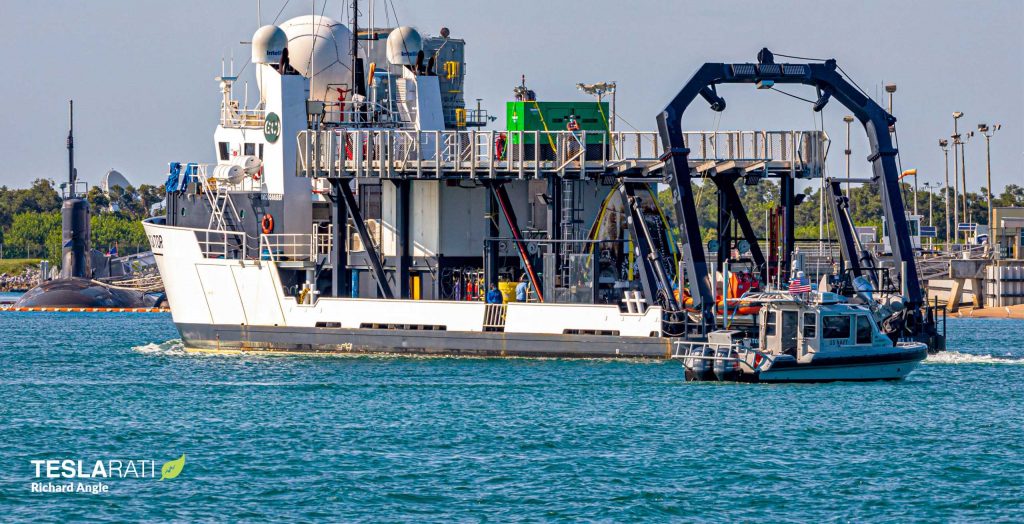
Given just how unexpected NASA’s (quasi) announcement was, many assumed that a clause that SpaceX could begin reusing Falcon 9 and Crew Dragon on Crew-2 (the second operational astronaut launch) meant that NASA would maybe consider the feat in 2021 or 2022. Instead, revealed in detail by both NASA and SpaceX officials over the course of several media events before, during, and after Crew Dragon’s first crewed reentry and splashdown, it quickly became clear that the plan was to reuse the Demo-2 Crew Dragon on Crew-2.
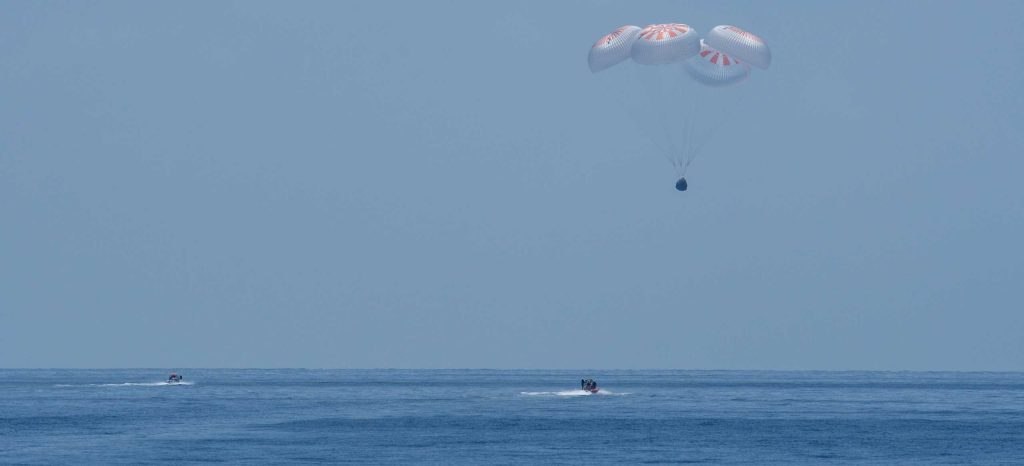
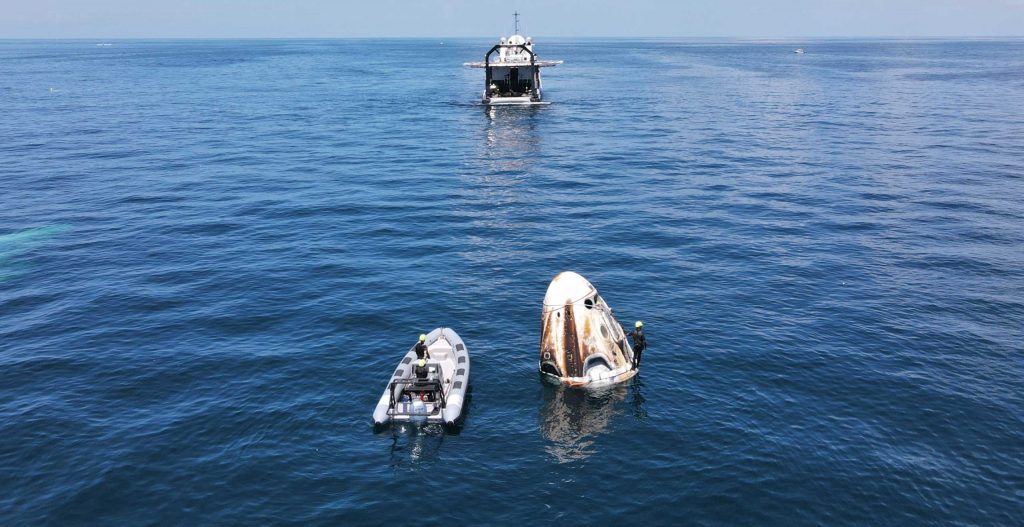
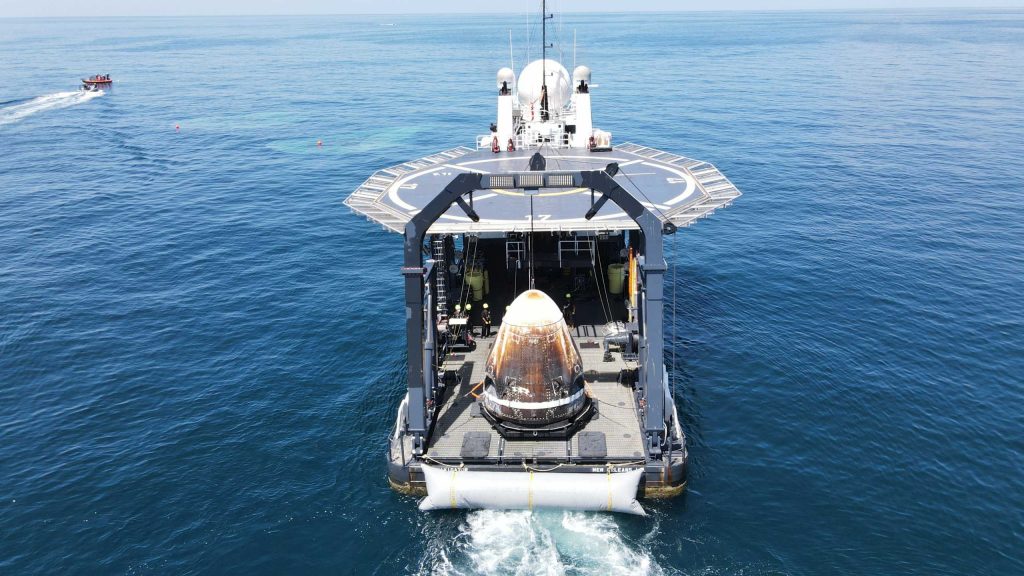
Scheduled as early as February 2021, Crew-2 is shorthand for SpaceX’s second operational astronaut launch to the International Space Station (ISS) and will follow directly in the footsteps of Crew-1, itself scheduled no earlier than (NET) late September. Given that NASA had apparently agreed to reuse the Demo-2 Crew Dragon before it had even returned to Earth (and thus before any inspections could be done), the space agency’s confidence in SpaceX must be at an all-time high.
Knowing NASA, though, that confidence is likely almost entirely based on fact and observations made over a decade of cooperation with SpaceX. With Crew Dragon capsule C206 safely in hand and back on dry land, SpaceX – alongside NASA – can begin an extensive inspection of the historic spacecraft. Building off of experience gained from Crew Dragon’s Demo-1 (C201) and In-Flight Abort (C205) test flights and recoveries, if capsule C206 look as good as SpaceX and NASA seem to think it will be, the inspection process could be a surprisingly short one.
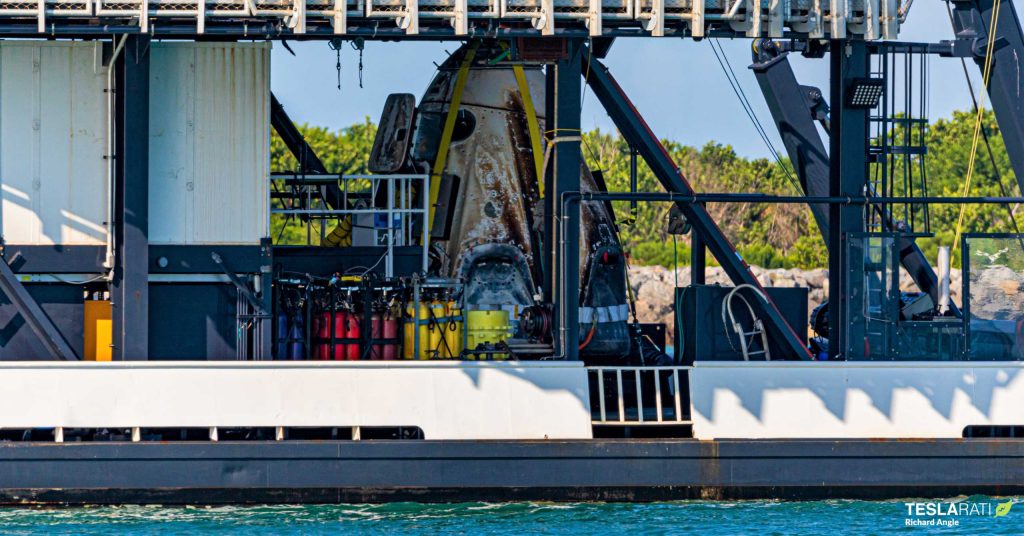
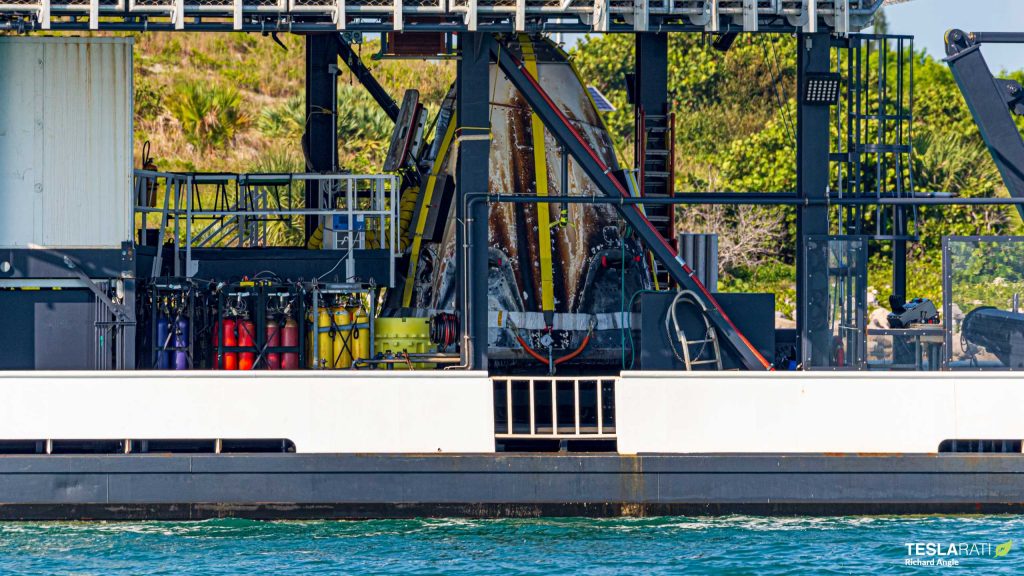

Once NASA officially qualifies Crew Dragon for operational astronaut launches, SpaceX teams will likely begin reassembling capsule C206 as soon as possible, completing any necessary repairs, replacements, or refurbishment along the way. If capsule C201’s processing is anything to go by, SpaceX may choose to perform some major integrated tests – possibly including a Super Draco abort thruster static fire – before giving the spacecraft the go-ahead to become the first reused crew capsule.
According to SpaceX engineer Kate Tice, the Crew Dragon refurbishment process will be quick relative to Cargo Dragon thanks to major design improvements, requiring six months or less between orbital flights. That means that future reuses should leave SpaceX and NASA plenty of schedule margin and Crew Dragon capsule C206 could potentially be ready to launch Crew-2 as early as late 2020.
Check out Teslarati’s Marketplace! We offer Tesla accessories, including for the Tesla Cybertruck and Tesla Model 3.
News
Tesla begins Robotaxi certification push in Arizona: report
Tesla seems serious about expanding its Robotaxi service to several states in the coming months.

Tesla has initiated discussions with Arizona transportation regulators to certify its driverless Robotaxi service in the state, as per a recent report from Bloomberg News. The move follows Tesla’s launch of its Robotaxi pilot program in Austin, Texas, as well as CEO Elon Musk’s recent comments about the service’s expansion in the Bay Area.
The Arizona Department of Transportation confirmed to Bloomberg that Tesla has reached out to begin the certification process for autonomous ride-sharing operations in the state. While details remain limited, the outreach suggests that Tesla is serious about expanding its driverless Robotaxi service to several territories in the coming months.
The Arizona development comes as Tesla prepares to expand its service area in Austin this weekend, as per CEO Elon Musk in a post on X. Musk also stated that Tesla is targeting the San Francisco Bay Area as its next major market, with a potential launch “in a month or two,” pending regulatory approvals.
Tesla first launched its autonomous ride-hailing program on June 22 in Austin with a small fleet of Model Y vehicles, accompanied by a Tesla employee in the passenger seat to monitor safety. While still classified as a test, Musk has said the program will expand to about 1,000 vehicles in the coming months. Tesla will later upgrade its Robotaxi fleet with the Cyercab, a two-seater that is designed without a steering wheel.
Sightings of Cybercab castings around the Giga Texas complex suggests that Tesla may be ramping the initial trial production of the self-driving two-seater. Tesla, for its part, has noted in the past that volume production of the Cybercab is expected to start sometime next year.
In California, Tesla has already applied for a transportation charter-party carrier permit from the state’s Public Utilities Commission. The company is reportedly taking a phased approach to operating in California, with the Robotaxi service starting with pre-arranged rides for employees in vehicles with safety drivers.
News
Tesla sets November 6 date for 2025 Annual Shareholder Meeting
The automaker announced the date on Thursday in a Form 8-K.

Tesla has scheduled its 2025 annual shareholder meeting for November 6, addressing investor concerns that the company was nearing a legal deadline to hold the event.
The automaker announced the date on Thursday in a Form 8-K submitted to the United States Securities and Exchange Commission (SEC). The company also listed a new proposal submission deadline of July 31 for items to be included in the proxy statement.
Tesla’s announcement followed calls from a group of 27 shareholders, including the leaders of large public pension funds, which urged Tesla’s board to formally set the meeting date, as noted in a report from The Wall Street Journal.
The group noted that under Texas law, where Tesla is now incorporated, companies must hold annual meetings within 13 months of the last one if requested by shareholders. Tesla’s previous annual shareholder meeting was held on June 13, 2024, which placed the July 13 deadline in focus.
Tesla originally stated in its 2024 annual report that it would file its proxy statement by the end of April. However, an amended filing on April 30 indicated that the Board of Directors had not yet finalized a meeting date, at least at the time.
The April filing also confirmed that Tesla’s board had formed a special committee to evaluate certain matters related to CEO Elon Musk’s compensation plan. Musk’s CEO performance award remains at the center of a lengthy legal dispute in Delaware, Tesla’s former state of incorporation.
Due to the aftermath of Musk’s legal dispute about his compensation plan in Delaware, he has not been paid for his work at Tesla for several years. Musk, for his part, has noted that he is more concerned about his voting stake in Tesla than his actual salary.
At last year’s annual meeting, TSLA shareholders voted to reapprove Elon Musk’s compensation plan and ratified Tesla’s decision to relocate its legal domicile from Delaware to Texas.
Elon Musk
Grok coming to Tesla vehicles next week “at the latest:” Elon Musk
Grok’s rollout to Tesla vehicles is expected to begin next week at the latest.

Elon Musk announced on Thursday that Grok, the large language model developed by his startup xAI, will soon be available in Tesla vehicles. Grok’s rollout to Tesla vehicles is expected to begin next week at the latest, further deepening the ties between the two Elon Musk-led companies.
Tesla–xAI synergy
Musk confirmed the news on X shortly after livestreaming the release of Grok 4, xAI’s latest large language model. “Grok is coming to Tesla vehicles very soon. Next week at the latest,” Musk wrote in a post on social media platform X.
During the livestream, Musk and several members of the xAI team highlighted several upgrades to Grok 4’s voice capabilities and performance metrics, positioning the LLM as competitive with top-tier models from OpenAI and Google.
The in-vehicle integration of Grok marks a new chapter in Tesla’s AI development. While Tesla has long relied on in-house systems for autonomous driving and energy optimization, Grok’s integration would introduce conversational AI directly into its vehicles’ user experience. This integration could potentially improve customer interaction inside Tesla vehicles.
xAI and Tesla’s collaborative footprint
Grok’s upcoming rollout to Tesla vehicles adds to a growing business relationship between Tesla and xAI. Earlier this year, Tesla disclosed that it generated $198.3 million in revenue from commercial, consulting, and support agreements with xAI, as noted in a report from Bloomberg News. A large portion of that amount, however, came from the sale of Megapack energy storage systems to the artificial intelligence startup.
In July 2023, Musk polled X users about whether Tesla should invest $5 billion in xAI. While no formal investment has been made so far, 68% of poll participants voted yes, and Musk has since stated that the idea would be discussed with Tesla’s board.
-

 Elon Musk1 week ago
Elon Musk1 week agoTesla investors will be shocked by Jim Cramer’s latest assessment
-

 Elon Musk3 days ago
Elon Musk3 days agoElon Musk confirms Grok 4 launch on July 9 with livestream event
-

 Elon Musk13 hours ago
Elon Musk13 hours agoxAI launches Grok 4 with new $300/month SuperGrok Heavy subscription
-

 News7 days ago
News7 days agoTesla Model 3 ranks as the safest new car in Europe for 2025, per Euro NCAP tests
-

 Elon Musk2 weeks ago
Elon Musk2 weeks agoA Tesla just delivered itself to a customer autonomously, Elon Musk confirms
-

 Elon Musk1 week ago
Elon Musk1 week agoxAI’s Memphis data center receives air permit despite community criticism
-

 Elon Musk2 weeks ago
Elon Musk2 weeks agoTesla’s Omead Afshar, known as Elon Musk’s right-hand man, leaves company: reports
-

 News2 weeks ago
News2 weeks agoXiaomi CEO congratulates Tesla on first FSD delivery: “We have to continue learning!”

















